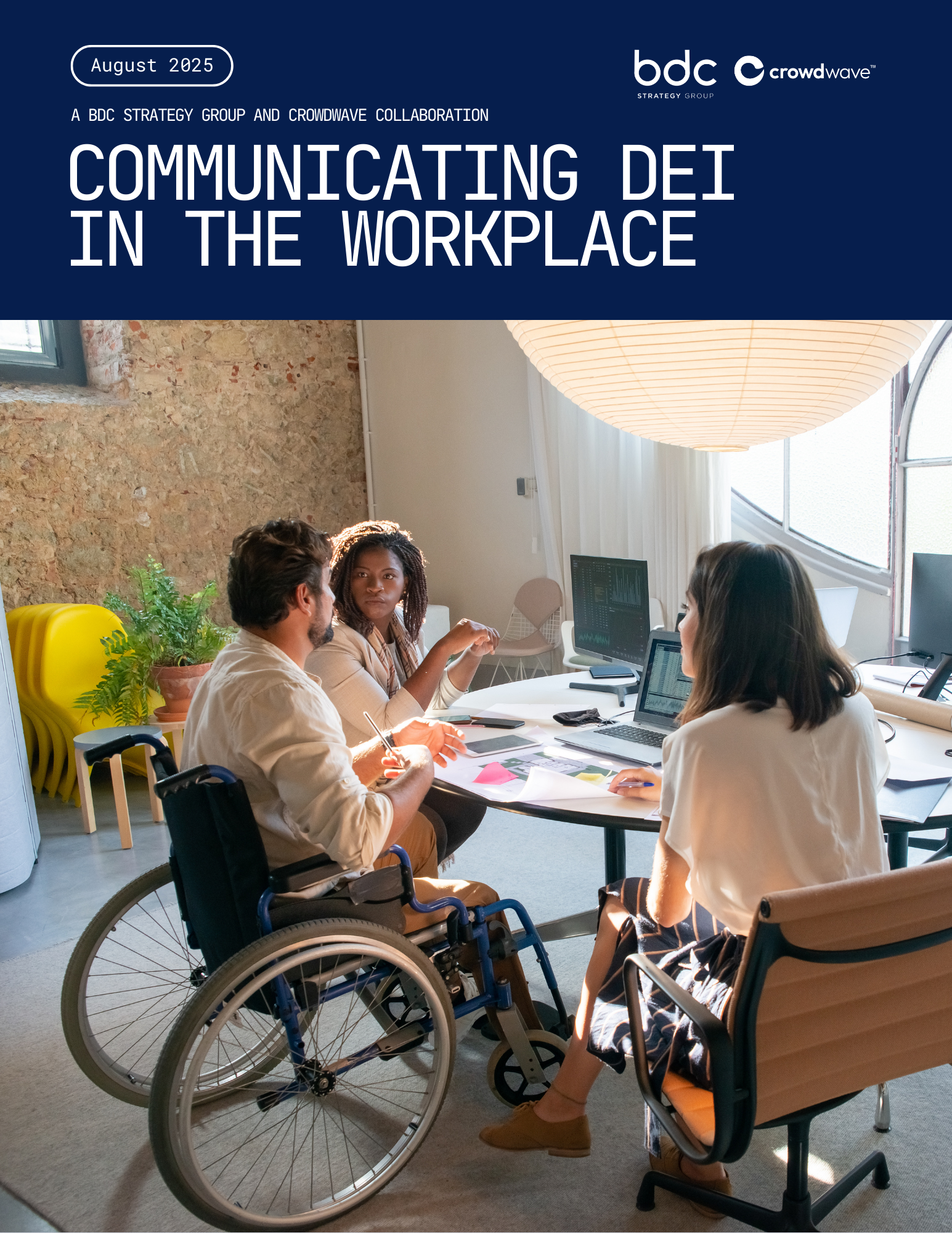A Crowdwave Case Study
Transforming DEI Messaging in a Divided Landscape
The Challenge
As Diversity, Equity & Inclusion (DEI) faces sustained pushback, organizations and political movements must rethink how they communicate inclusion, fairness, and opportunity.
Traditional language is increasingly politicized, making strategy and empathy critical to success. Crowdwave and BDC Strategy Group wanted to analyze the effectiveness of specific DEI messaging in relation to left-, center-, and right-leaning individuals.
The Crowdwave Solution
Crowdwave leverages AI to simulate human opinion, enabling discrete message testing and deeper insights into sentiment—especially among hard-to-reach audiences.
Crowdwave and BDC Strategy Group tested three alternative DEI messages using a synthetic sample of 300 simulated U.S. adults (ages 18–65), evenly split across ideological segments: Left, Center, and Right (100 each). The three messages focused on:
Opportunity & Fairness
Perspectives & Teamwork
Innovation & Community
Key Findings
Message performance is deeply shaped by audience ideology.
No message performed well across all groups—each segment favored different language, tone, and framing, with sharp differences especially between left- and right-leaning respondents.
Tailor language to the cultural context you're operating in.
The same DEI message can inspire one audience and alienate another. Internal culture, institutional history, and political orientation should all guide how you communicate.
Watch for buzzwords and cultural coding.
Even well-intentioned language can trigger ideological resistance if it echoes politicized or overly corporate phrasing. Messages with abstract or coded terms (like “inclusion” or “innovation”) risk being dismissed as vague or agenda-driven, especially by more skeptical audiences.
Unlock the Full DEI Messaging Study
Dive into the complete study with message rankings, audience breakdowns, and actionable insights.






